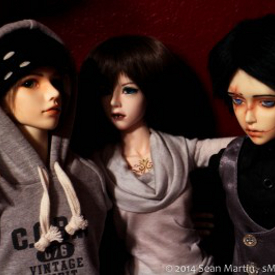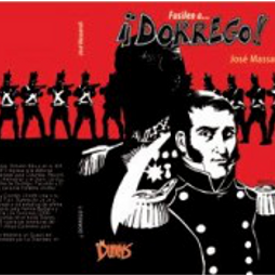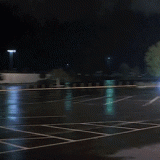May you live in interesting times. So goes the curse….
Last year at IlluxCon, a convention devoted purely to the buying, selling and showing of painted art – I overheard a young artist saying to another how he yearned to learn how to use “traditional media” – but he just didn’t have the time. Putting aside the obvious, that learning how to draw takes a while, and youth are an impatient lot, was this label ever required before the era of “digital media”? Sure, for a while we added the words airbrush and handbrush as descriptors but most of the time (in my opinion) this information wasn’t for the sake of accuracy, so much as to elevate the work or demean it, depending on one’s view of airbrushing. 😉 Now we’ve got “digital media” – and everything else, by default, is “traditional.” Forget about oil, or acrylics, or tempera or gouache. It’s all “traditional”. Yikes!
The digital revolution has brought a sea-change to the hobby of collecting illustration art – but only as a consequence of the numbers of industries that have been thrown into disarray, if not bankruptcy by “digital media”. And while it’s still unclear exactly what the most successful business model will be for many of them in the 21st century, one thing seems almost certain when it comes to the field of commercial art: there ain’t gonna be many assignments for hand painted illustration – airbrush or no airbrush. And artists aren’t alone. Publishers of printed books have enjoyed a good run. Now it’s time for e-books. Is this good news, or bad news, for those who collect books and illustrative art?
You might go so far as to say: Print is dead – or if not dead, dying. Newspapers certainly are dying; they’re losing advertisers and subscribers. Anything printed on paper, in fact, is going away. I just bought a piece of jewelry this week, and I was handed a cel phone to sign my name (with my finger). My receipt would be sent to me….by email. “Would you like a paper receipt?” is now an option. Soon, it won’t be.
Few fields have experienced upheaval in the digital age as dramatic as the field of photography (upon which, once upon a time, artists, graphics and book designers, advertisers, game companies, publishers, and printers all depended…). I stopped printing catalogs two years ago, after 16 years of annual production – and I’ve already been solicited by a dealer who’s wiling to take my entire inventory of outdated catalogs off my hands. He thinks they have promise as “collectibles.” (!)
But it’s not just books, and printing that’s been affected. All sorts of business sectors that used to provide income and career opportunities for commercial artists have collapsed. Yes, after about a century of unparalleled popularity, science fiction and fantasy illustration art has succumbed to the inevitable, the tidal wave of digitization that has swept us all into an uncharted future dominated by pixels. All through the years, there was one constant – the need for a steady supply of paintings and drawings for book and magazine covers, interiors….and calendars, puzzles, game box covers, packaging art for toys and action figures, collector plates, pin ball machines, tee-shirts, notecards, trading cards, even wine bottle labels and POGs (yeah….remember those?) Along the way there would be valleys and peaks; war time disruption of production and conventions, popcult energizers like Star Wars. But science fiction was golden. Long after mysteries, westerns, men’s adventure, military and romance genres stopped needing artists….science fiction and fantasy was there.
Dozens of artists left the field for greener pastures. Many more left because there was nothing to keep them there anymore. No more Sega Pinball backglass art or Hamilton Mint “I love Lucy” collector plates for Morgan Weistling. No more Stirling or Landmark wall calendars for me or dozens of other artists. No more Second Nature screen savers, no more wall paper designs, no more phone cards.

Illustrative art: It was a field of artistic endeavor that grew for 80 years, and then took about 20 years to wither away…..and rise like a phoenix in the form of anime’, video and computer games, film animation, graphic design, and any product that needs an image you can make via Poseur or Photoshop. A whole new world that begged for attention, that rewarded youth and novelty and experimentation, and speed. A career that paid book illustrators . . . even less than before.
For commercial artists, just as for collectors of contemporary illustration, there are a lot of decisions being made today – many of them painful. For those still addicted to “traditional media” when it comes to the visual arts, the digital world seems like an alien place. Are we to go silent into that good night? What are our options?
Not all media will be equally satisfying to collectors or artists. Now that the last roll of slide film has been manufactured, and the last projector bulb has burned out, we need a better understanding of how technology is affecting how we think about art. Is the quality of art measured by the medium? Or is it measured not by how it is created, but rather how well the art serves its intended purpose? And what happens if there is no longer that purpose drawing us to the art (a treasured book or story from our childhood, or an artist’s vision of what it’s like on Mars that captured our imagination when we first saw it in a magazine) will we still be attracted to girls riding dragons, exploding space ships? A chapter in the history of art may be closing – what new story is beginning? If there is no original art “as we know it”, if there is no painting, but the imagery is as strong as ever, will collectors be satisfied with owning printed reproductions of digital files?

If there is anything to be learned from the diversity of viewpoints on this issue, it is that artists are no more immune to cultural and economic dislocation than steelworkers. And yet… as many point out, the global shift to digitization is no more certain than was the popular “end to movie going” predicted in the last decade. It’s possible that publishers will come to regret their errant ways, and re-discover the powerful marketing advantages of paint (“it’s cyclical”). My guess, though, is that it’s just as likely that software (or robots) will fill the void, because where there’s a need (“brush strokes” sell), business will find a way to satisfy it. There are no best answers, only plenty of them, while the number of questions will continue to expand in proportion to the increased diversity and expansion in artistic media.
I will continue to explore this theme in future blogs. It’s been on my mind since I started sounding the death knell for SF/F illustration art “back in the 90s, claiming that would be the last decade for such art “as we knew it .” By 2009 I decided it was time to ring the bell publically, and edited a collection of essays for Paint or Pixel: The Digital Divide in Illustration Art (NonStop Press). The views expressed there, together with this blog I hope will provide fodder for your comments. I want to hear your opinions on the many sides of this issue as we leave the 20th century – “The science fiction century” as the late Charles Brown (Locus publisher) called it – in traditional dust.











In the previous century I rarely, unlike you Jane, was where original art was for sale, at conventions, an exception being the 1973 Worldcon (Toronto) during which I bought a Kelly Freas DAW Books cover preliminary and a hand-coloured Grant Canfield. I also bought a lot of prints, mail-order, during the heyday of prints, the 1970s.
In this century I more often am where originals are for sale and I have more money to spend. I buy what I call real art, hand made art, the only one in existence, pictures and sculpture. Other collectors, of books, buy the most limited edition. Comic book collectors buy the highest grade copy of a comic book. All of these types of purchase depend of course on how much money can be spent.
I like Robert Lesser's advice, 'Buy more than you can afford' because you are less likely to suffer buyer's remorse. We bought a painting on that basis and our taste was gratifyingly acknowledged when the painting, "Helium" by Mark Zug, won the first Illie Award, receiving more votes than pictures by Donato and by Whalen.
i didn't know Mark Zug when I saw "Helium" but my wife and I liked "Helium" enough to take the financial plunge. It's hanging in the wall in front of me as I type these words.
I could have bought many prints by many artists for the same money spent on "Helium."
But prints are sex with a condom, satisfactory, enjoyable, meeting a need; sex and collecting both being needs. Owning an original is better than owning a print, I testify.
Murray's corollary to Lesser: A mediocre picture is better than two OK pictures. A very good painting is better than two mediocre pictures. A great painting is best. Quality is better than quantity.
this is exactly what I was hoping for…some sort of reaction to what is clearly going to be one of the challenges to collecting art in this field in the years ahead. Clearly, we need a new vocabulary (thanks, Astrid!) but also just as clearly…one's budget in any collecting hobby is going to dictate one's choices. And I, too, Murray, have read advice similar to that of Bob Lesser's – which boils down to "the best purchases should "hurt". I just don't happen to subscribe to that. Collecting doesn't have to be painful, and I don't believe in spending more than you can afford – which is not the same thing as saying "not spending more than you want to" or "not spending more than anyone in their right mind would spend" etc (which is something I've done with surprising frequency haha). You may not LIKE how much it takes to satisfy your addiction, but it's not the rent money or your kid's college fund. If you are buying that way I say: STOP. I like your "Corollary" however….and it's exactly the kind of advice I give when people ask "should I buy ONE painting for $10,000 or TEN paintings for $1000. each or TWENTY paintings for $500." The trick/catch here, however, is that it always "depends"….on your eye. YOUR mediocre could be my "best" 🙂 It ain't likely…..with you, Murray ;-)…..but there's always the chance of that! As for prints: POWER to those artists who can beat the odds, and make some money from them; that's what ATTRACTIVE IMAGES and MARKETS are all about. On the FLIP side, however, I'm with Tim. Once you understand the power/appeal of originals, given the essential worthlessness of most prints (great imagery, very poor re-sale value) – there's no turning back.
I think Astrid's right in that there is a pretty good market out there for prints, as I always see artists at cons and even illuxcon selling them successfully, but as a collector it's a shame to think of going to prints only. Once you go traditional you can't go back :-P. Original art has a much stronger connection to me than being one of even a limited run of 100 owners of a print. You feel closer to the piece on the wall, and feel more like you're supporting the genre/hobby/artist. Plus it's so much easier to jusify paying $200 to frame a more expensive painting than a print!
Very interesting post! Speaking for me personally, I work in both "traditional" (oils, in my case) and digital media – I have painted in oils for many years as a "somewhat more than a hobby" but only taken steps to turn this into a (hopefully one day) money spinning career in the last 7 years or so. I quickly found that in terms of doing professional illustration work, digital is without any doubt the way to go. From what I observe, there seems to be quite a market for art prints currently, especially in the Fantasy/Science Fiction genre. I even turned some of my oil paintings into limited edition prints, in the hopes that it would be easier to sell those, than the original paintings!
One thing that art collectors seem to find difficult about digital art, is that there is no "original" as such – or rather, the original is not an image, it is a file on a hard disk. So rather than having a (very precious) "original" which is then made available as (somewhat more affordable) "limited edition art prints" or cheap "posters", there now is ONLY the prints. Which has, of course, long been the case for traditional printing techniques… but then they don't call themselves "painting". I do think some rethinking of the genre definitions might be in order at this point! 🙂